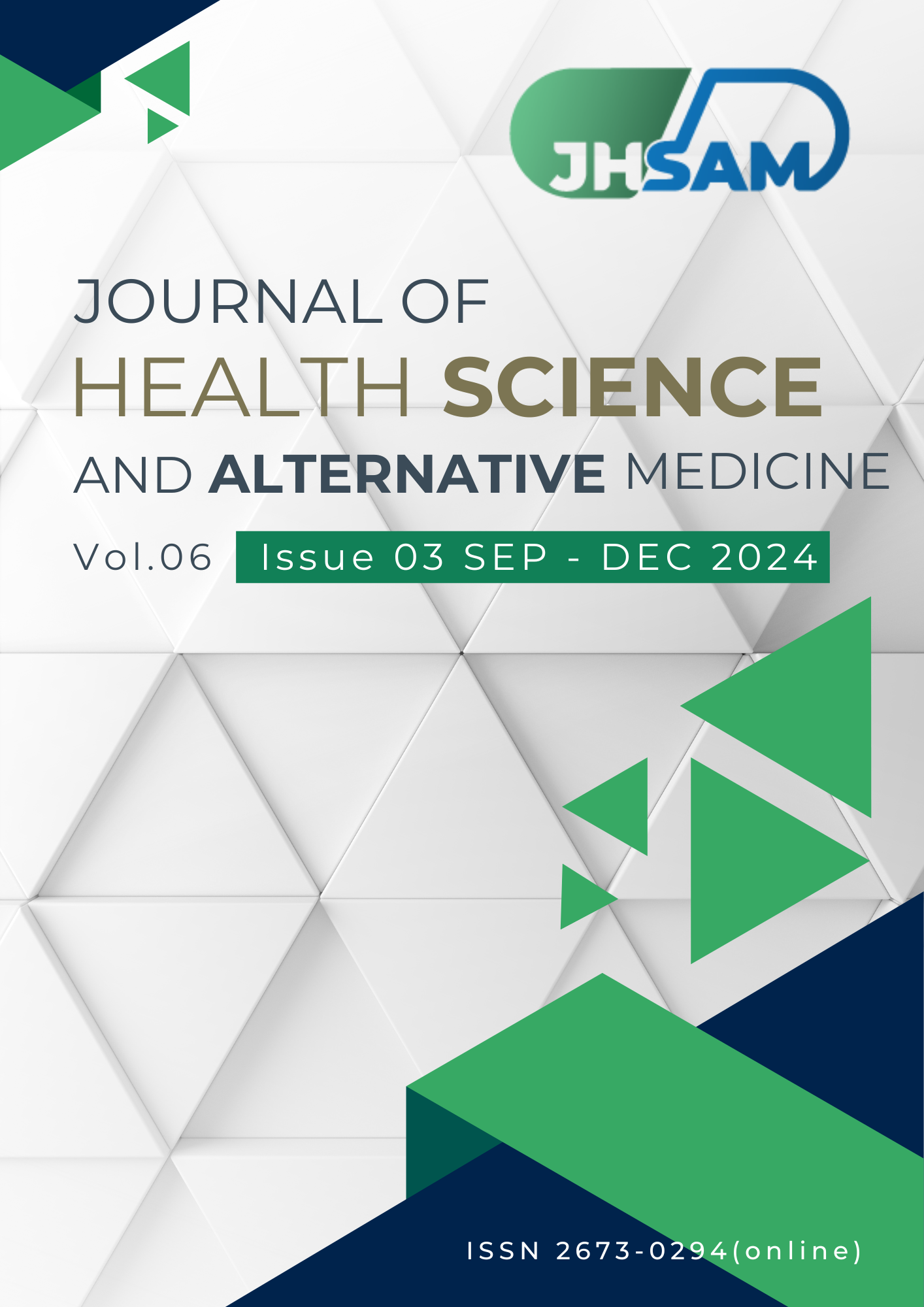Factors Influencing Organizational Commitment among Nurse Managers of Labour and Delivery Departments at the Secondary Level Hospitals Affiliated to the Thai Ministry of Public Health
Main Article Content
Abstract
Introduction: Organizational commitment is an essential component that leads the delivery department to accomplish its goals, promote organizational efficiency and effectiveness, and improve the quality of healthcare services for mothers and children. This study aimed to identify and predict factors associated with organizational commitment among nurse managers of labor and delivery departments at the secondary-level hospitals affiliated with the Thai Ministry of Public Health (MOPH).
Methods: A correlational predictive design was applied to collect data in obstetricians-managed and treated health conditions associated with prenatal, intrapartum, and postpartum care in the secondary-level hospitals based on MOPH’s E-service plan, F1- 77 hospitals (first-level) and M2 -88 hospitals (middle-level). Questionnaires were used to collect personal characteristics and information on organizational commitment. There were 17 items to collect data on three dimensions of organizational commitment: affective, continuance, and normative organizational commitment. Seven experts detected the questionnaire’s content validity using a content validity index (CVI) of 0.94, and Cronbach’s reliability coefficient of the questionnaires was 0.84. Data were collected and analyzed using descriptive statistics. Pearson product-moment correlation and stepwise multiple regression were used for the analyses.
Results: A total of 238 nurse managers from 119 labor and delivery departments at the secondary level hospitals based on MOPH’s E-service plan, F1- 77 hospitals (first-level) and M2 -88 hospitals (middle-level) were recruited into the study. Age and education were significantly correlated at p-value<0.010 (r=0.20, r=0.23) and predicted an 8.6% variance in organizational commitment (R2 =0.086, p-value <0.010). They also significantly predicted 13.1% and 10.1% of the variance in affective and normative organizational commitment (R2=0.131, p-value<0.001; R2=0.101, p-value<0.010). The strongest influencing of organizational commitment was education level (β=0.21, p-value<0.010), and it was also the best predictor of organizational commitment (β =0.17, p-value< 0.010).
Conclusion: The midwifery nurse administrative of the delivery unit should be concerned with affective and normative organizational commitment. Enhancing continuing education at higher educational levels or taking a short training course could promote a better practice of maternal and midwifery care.
Article Details

This work is licensed under a Creative Commons Attribution-NonCommercial-NoDerivatives 4.0 International License.
JHSAM publishes all articles in full open access, meaning unlimited use and reuse of articles with appropriate credit to the authors.
All our articles are published under a Creative Commons "CC-BY-NC-ND 4.0". License which permits use, distribution and reproduction in any medium,
provided that the original work is properly cited and is used for noncommercial purposes.
References
Sritoomma N. Service excellence: strategies for healthcare and nursing services. Indian J Public Health Res Dev. 2018; 9 (10): 521-26.
Fottler MD, Ford RC, Heaton CP. Achieving service excellence: strategies for healthcare. 1st ed. Chicago: Health Administration Press, 2010.
Bureau of Policy and Strategy, Office of the Permanent Secretary, Ministry of Public Health. Key performance indicator Ministry of Public Health. Nonthaburi: Veterans Organization of Thailand, 2017. (in Thai).
Wongchantorn N, Sritoomma N, and Wongkhomtong J. Development of organizational effectiveness indicators for delivery departments at the secondary level hospitals affiliated to the Ministry of Public Health. Indian J Public Health Res Dev. 2018; 9 (10): 517-22.
Yasmin K, Marzuki NA. Impact of organizational commitment on intention to quit among psychiatric nurses: evidence from Pakistan. Int J Learn Dev. 2015; 5(4): 89-102.
Satoh M, Watanabe I, Asakura K. Occupational commitment and job satisfaction mediate effort-reward imbalance and the intention to continue nursing. Japan J of Nur Sci. 2017; 14(1); 49-60.
Suchada S, Rungrueng P, Kantamara P, and Promsiri T. Factors affecting turnover intention of generation Z professional nurses in a university hospital. a Thesis Master Degree of Management, Mahidol University, Thailand, 2021. (in Thai).
Salem OA, Baddar F, AL-Mugatti HM. Relationship between nurses’ job satisfaction and organizational commitment. J Nur Health Sci. 2016; 5(1): 49-56.
North N, Leung W, Ashton T, Rasmussen E, Hughes F, Finlayson N. Nurse turnover in New Zealand: costs and relationships with staffing practices and patient outcomes. J of Nur Mngt. 2013; 21(3): 419-28.
Siew P, Chitpakdee B, Chontawan R. Factor’s predicting organizational commitment among nurses in state hospitals in Malaysia. IMJM. 2011; 10: 21-8.
Labrague LJ, McEnroe-Petitte DM, Tsaras K, Cruz JP, Colet PC, and Gloe DS. Organizational commitment and turnover intention among rural nurses in the Philippines: Implications for nursing management. Int J Nur Sci. 2018; 403-8.
Allen NJ, and Meyer JP. Affective continuance, and normative commitment to the organization: An examination of construct validity. Journal of Vocational Behavior.1996; 9(3): 252-76.
Best JW, and Kahn JV. Research in Education [Internet]. 8th ed. New York: Allyn and Bacon. 2014. Available from: http: //ww2.odu.edu/~jritz/attachments/
/reined.pdf
Jena RK. An assessment of demographic factors affecting organizational commitment among shift workers in India. Management. 2015; 59-77.
Porter JA. The relationship between transformational leadership and organizational commitment in nonprofit long term care organizations: the direct care worker perspective. Creighton Journal of Interdisciplinary Leadership. 2014; 1(2), 68-85.
Zehir C, Sehitoglu Y, and Erdogan E. The effect of leadership and supervisory commitment to organizational performance. Procedia - Social and Behavioral Sciences. 2012; 58, 207-16.
Meehanpong P, Luangamornlert S, Changmai S. A causal model of patient unit performance in general hospital under Ministry of Public Health. A dissertation philosophy of doctor of nursing administration, Christian University of Thailand, 2014. (in Thai)

